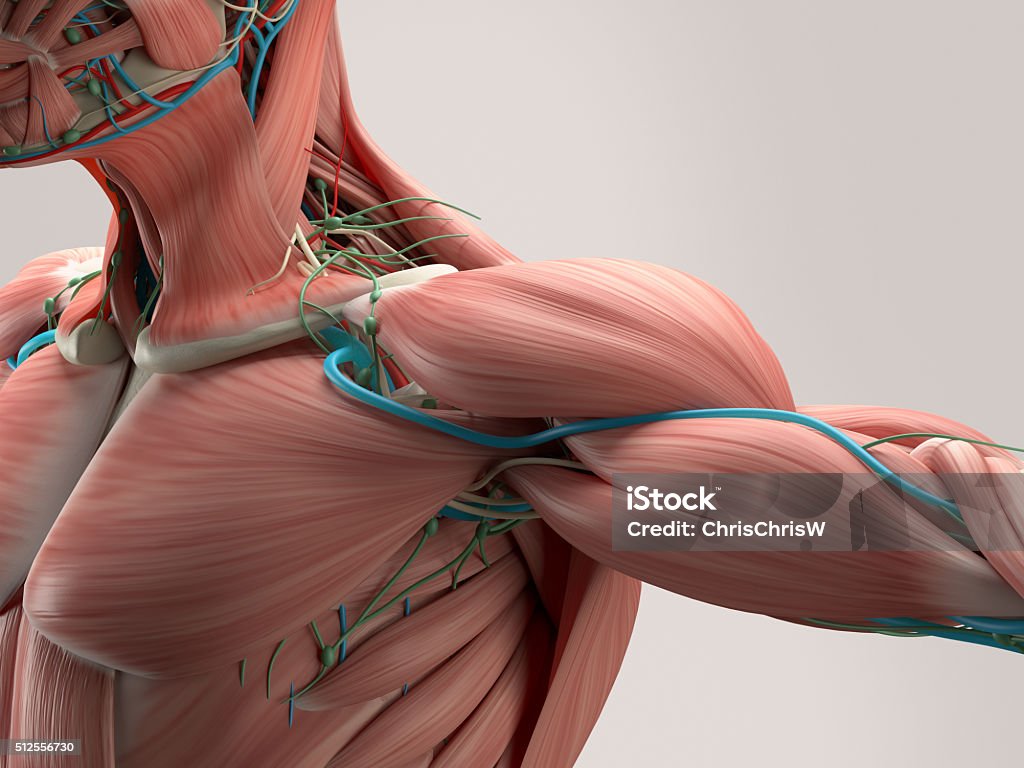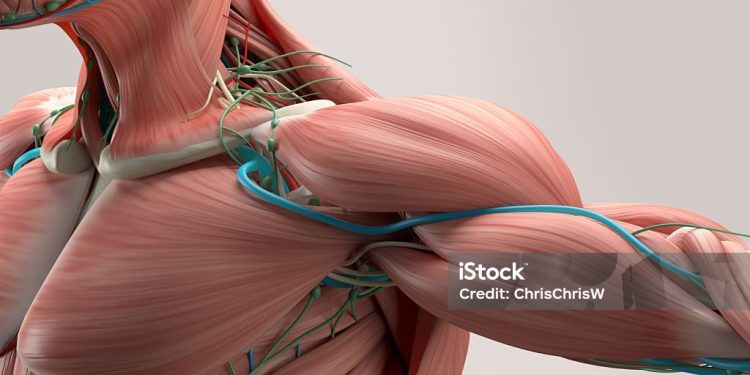While you might know NAD+ levels always decrease with age, there is a 50% drop in NAD+ levels by 40 and an 80% drop by the age of 60. Even though this is an understated fact, users can mitigate such a fact by regularly exercising to improve the NAD+ levels in body muscles.
Researchers have shown that exercise is an effective way to improve cardiometabolic health and glucose homeostasis across the body because it improves SM metabolism and function. Similarly, according to Yang (2014), maintaining an adequate degree of SM tissue density is crucial for fitness and total autonomy. This consensus holds in the exercise physiology field.

The role of NAD+ in skeletal muscle maturation and repair
Nutrient availability may be time-synchronized with muscle formation and growth. Since NAD+ tells cells how much nutrition they have, it stands to reason that the NAD supplement plays a role in controlling these cellular changes. Myoblasts (in C2C12s and primary muscle cells) have elevated NAD+ levels, but myotubes (in the same cells) have lower amounts.
Therefore, the prevailing belief is that reduced NAD+ levels facilitate muscle differentiation. Activation of SIRT1 appears to facilitate the control of muscle development by NAD+ in the produced myoblasts.
MyoD and the acetyltransferase p300/CBP-associated factor (PCAF) are complexes with SIRT1 that decrease muscle gene transcription in vitro, suggesting that SIRT1 suppresses muscle development. Fulco and colleagues postulated that a method for coordinating nutrition and myogenesis would be provided by integrating nutritional sensing of glucose with NAD+ levels.
Through regulating NAMPT levels, they discovered that energy sensing contributes to NAD+ levels. AMPK, which is enhanced by glucose restriction, promotes NAMPT activity. Therefore, NAMPT activation, enhanced SIRT1 activity, and suppression of muscle differentiation are all outcomes of glucose restriction.
Strength training enhances the metabolism of NAD+
Regularly occurring periods of elevated energy demand define exercise training in contrast with acute activity. Metabolically stressed tissue detects these cues and responds by initiating adoption processes, which boost the body’s ability to withstand future exposure. This section is devoted to research on exercise-induced changes in NAD+ metabolism, in addition to the more well-known effects of exercise on mitochondrial density and capillarization.
Similar to acute exercise studies, most research examined skeletal muscle tissue; however, a small number also examined other organs or tissues, including the brain, testicles, adipose tissue, epidermal skin cells, kidney, blood, liver, cardiac muscle, and testicles.
1. Liver
Exercise training significantly altered kynurenine pathway enzyme messenger RNA levels in liver tissue. An increase in NAD+ levels paralleled these mRNA alterations, indicating a persistent elevation of de novo NAD production. Likewise, when comparing trained rats to controls, we find that their livers have higher NAD+/NADH ratios.
The results may not apply to humans because of changes in the metabolism of NAD+ precursors between species. Still, these adaptations appear reasonable when considered in the context of hepatic recirculation of NAD+ precursors to the peripheral tissues.
2. Thermo-muscular cortex
There is a lot of consistency in the effects of exercise training on the tissue of skeletal muscles in humans and rats. Several investigations showed an upsurge in NAMPT protein or NAD+ concentration. Similarly, human exercise training increased total NAD(H) concentrations, NAMPT mRNA levels, and NAMPT protein levels.
As a result, the NAD+ salvage route is an extremely flexible part of the NAD+ cycle in skeletal muscle. Given that IDO46 and KMO are oxygen dependent, it is intriguing to speculate whether the decreased intramuscular oxygen tension during exercise promotes the NAD+ salvage route over de novo NAD+ production. In this approach, acute exercise programs would emphasize NAD+ salvage route activity more, leading to chronic NAMPT enzyme overexpression and elevated NAD+ levels.
Upon deeper inspection, it was found that exercise training interventions mostly raised NAD+ levels in humans. The observed rise may be the exercise-mediated adoption of senescent NAD+ levels, leading to a more youthful phenotype because resting NAD+ levels are often lower in these groups than in young controls.
In line with this, many cross-sectional studies found a positive relationship between NAMPT levels of proteins and V̇O2max, indicating that exercise boosts the activity of the salvage pathway, which in turn causes NAD+ levels to rise.
3. Hematology
In terms of systemic NAD+ metabolism, healthy people’s blood serum NAMPT protein levels dropped following 6 months of endurance and power training combined. Given that skeletal muscle NAMPT protein levels tend to rise as a consequence of exercise training, these findings may suggest that skeletal muscle is becoming more independent in its (re)synthesis of NAD+, which would reduce the need for circulating NAMPT to deliver NAD+ to the rest of the body.
Concerns about the optimal length of exercise training treatments are raised by the fact that a 4-week exercise intervention did not result in changes in systemic NAMPT levels.
In what other ways might NAD+ be increased in the elderly?
Although Chong and colleagues found no significant increase in NAD+ or SIRT1 levels in mature males after exercise, there is evidence that NAMPT vesicles boost within muscle cells during exercise, and one study found that older adults with a regular exercise routine have higher NAD+ levels. Along with the many other advantages exercise offers, this suggests that it may still be valuable for elderly persons who want to increase their NAD+ levels to exercise.
Although exercise has been shown to increase NAD+ levels in older people, it is unclear if this increase is sufficient to provide the anti-aging and lifespan advantages. However, it is possible to use NAD+ precursor supplements, such as nicotinamide adenine dinucleotide (NMN) and nicotinamide riboside (NR), to assist in guaranteeing a rise in blood NAD+.
In the end!

In the last 20 years, NAD+ and its supplements have been acknowledged mainly as flexible multifunctional molecules. In metabolic pathways, NAD+ acts as a coenzyme and provides a significant amount of reducing power to several enzymes that transport hydrogen ions. However, a user must consult his/her dietitian or doctor to incorporate such a supplement.


 Home
Home










